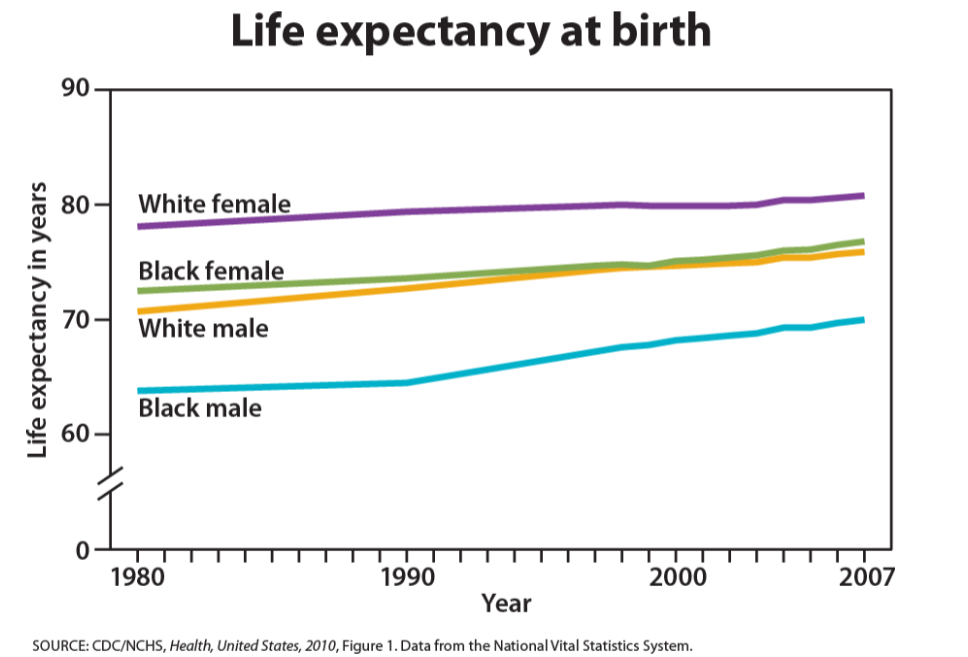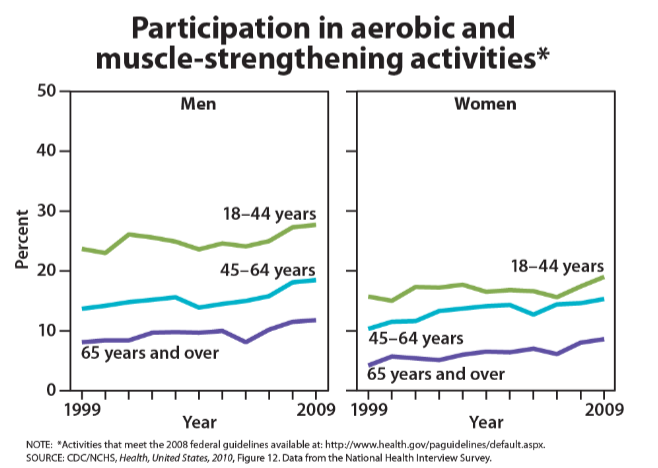10.4: Life Expectancy and Quality of Life (Ob4, Ob5)
- Page ID
- 70960
One way to prepare for the future is to find ways to improve quality of life. Life expectancy in 1900 was about 47 years. Today, life expectancy for all races is 77.9 (75.4 for males and 80.4 for females.) For whites, life expectancy is 75.9 for males and 80.8 for females. For black males, life expectancy is 70 and is 76.8 for black females (U. S. Census Bureau, 2011). Historic racism or years of living under oppressive prejudice and discrimination can increase the incidence of stress‐related illness and contribute to a lower life expectancy. The United States ranks 17th among other countries for its life expectancy for women and 19th for men. Japanese women and Swedish men have the longest life expectancies (He et al., 2005).

Increased life expectancy brings concern over the health and independence of those living longer. Greater attention is now being given to the number of years a person can expect to live without disability which is referred to as active life expectancy. When this distinction is made, we see that although women live longer than men, they are more at risk of living with disability (Weitz, 2007). What factors contribute to poorer health? Marriage has been linked to longevity, but spending years in a stressful marriage can increase the risk of illness. This negative effect is experienced more by women than men and seems to accumulate through the years. Its impact on health may not occur until a woman reaches 70 or older (Umberson, Williams, et. al., 2006). Sexism can also create chronic stress. The stress experienced by women as they work outside the home as well as care for family members can also ultimately have a negative impact on health. Poorer health in women is further attributed to an increase in rates of smoking by women in recent years (He et als, 2005).
The shorter life expectancy for men in general, is attributed to greater stress, poorer attention to health, more involvement in dangerous occupations, and higher rates of death due to accidents, homicide, and suicide. Social support can increase longevity. For men, life expectancy and health both seem to improve with marriage. Spouses are less likely to engage in risky health practices and wives are more likely to monitor their husband's diet and health regimes. But men who live in stressful marriages can also experience poorer health as a result.
Older adults can improve the quality of their lives by adjusting or changing their lifestyles. By exercising, reducing stress, stopping smoking, limiting use of alcohol, and consuming more fruits and vegetables, older adults can expect to live longer and more active lives. (He et. als, 2005). Stress reduction both in late adulthood and earlier in life is also crucial. The reduction of societal stressors can promote active life expectancy. In the last 40 years, smoking rates have decreased, but obesity has increased, and physical activity has only modestly increased.


